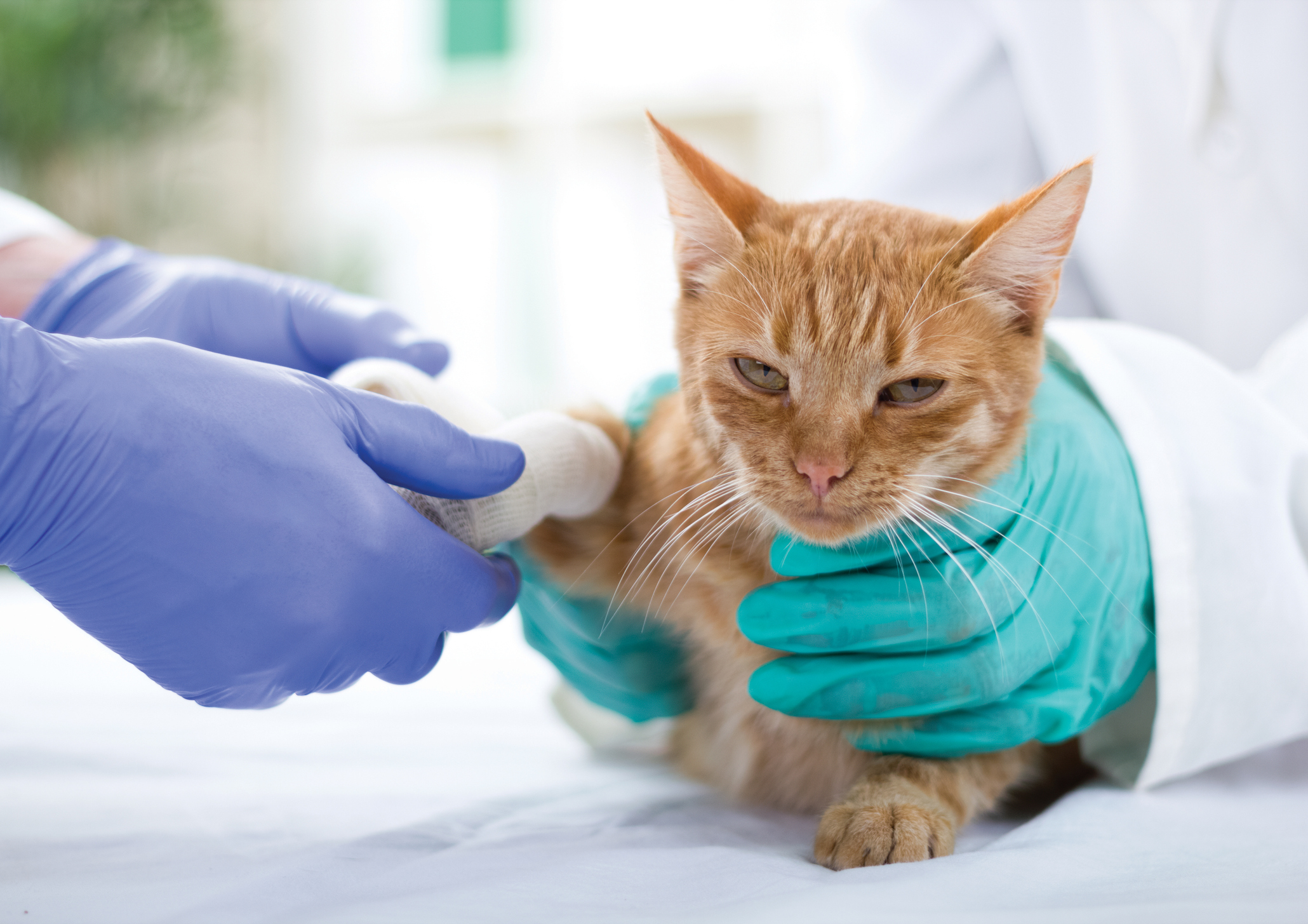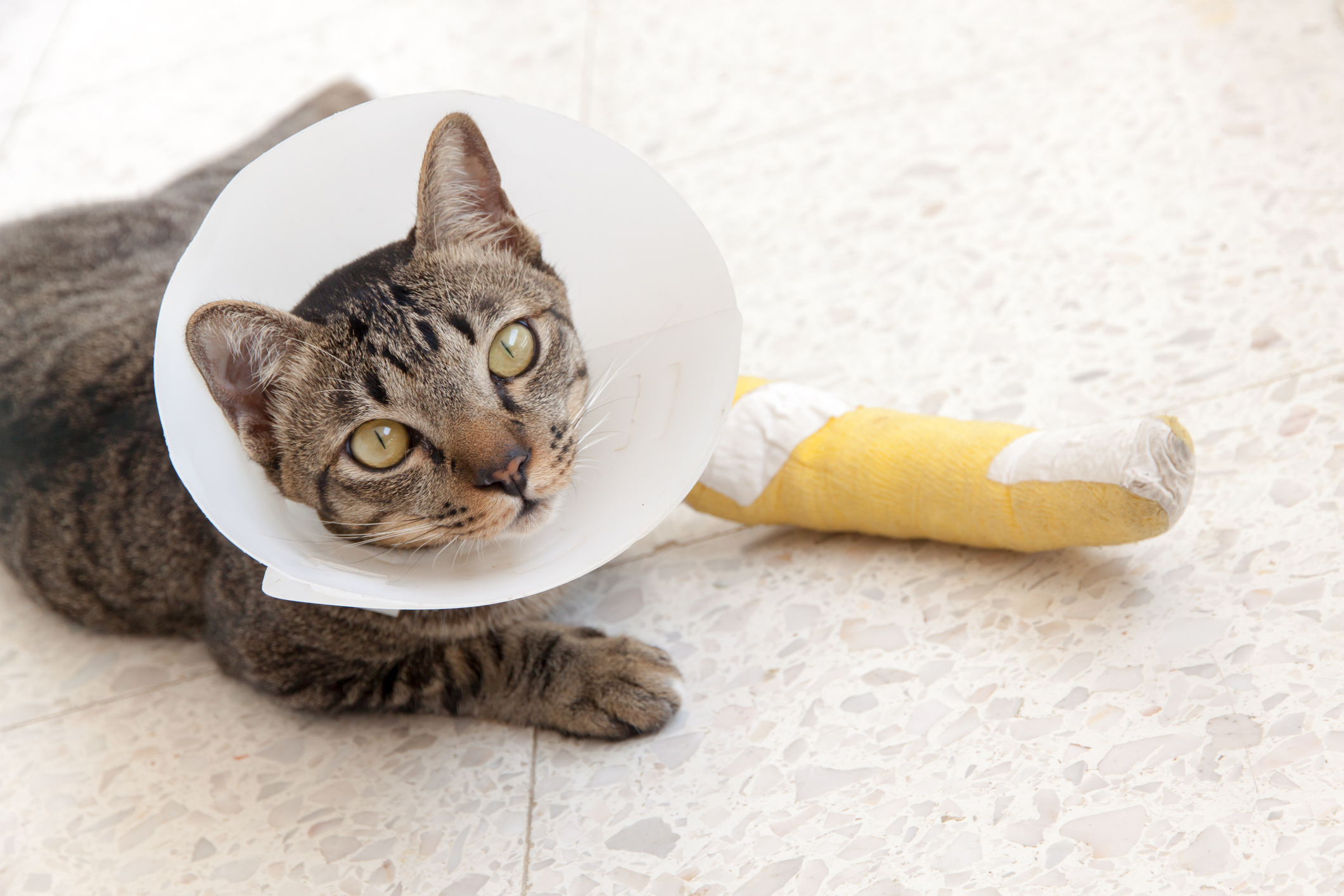
Caring for A Cat with a Broken Bone
Cats are often thought to be graceful and coordinated, and many people mistakenly believe that cats always land on their feet. However, like all animals, cats are susceptible to major injuries from falls or accidents, including broken bones.
Identifying, getting help and caring for a cat who’s suffering from a broken bone can be challenging—especially if your cat is the rambunctious type. It’s very important to exercise caution and supervise your cat closely to ensure they heal properly and can move with ease once again.
Identifying your cat’s broken bone
Cats are good at masking pain, so it might take a little work and close observation to notice that something is wrong with your cat if you didn’t see them get injured. Take a closer look if you notice these signs:
- Hiding
- Limping or difficulty moving
- Immobile tail
- Swelling
- Loud meowing or howling
Upon closer inspection, you may discover that something is wrong with your cat’s legs, tail or other body part.
It’s not always easy to tell if your cat’s bones are broken, though. You’ll need to take your pet into the vet to have scans completed in order to know the extent of their injuries. However, you should be able to tell whether a suspected fracture is closed or open:
- Closed fracture: Whether a fracture is partial (only parts of the bone are broken) or complete (the bone is completely broken and separated into multiple parts), a closed fracture is one that does not perforate the skin. Therefore, you won’t be able to see the bone itself.
- Open fracture: An open fracture is one that punctures the skin and exposes fragments of bone to the outside. These types of fractures usually bleed and have a higher risk for infection.

Safely transporting your cat
If you suspect your cat has a broken bone, you’ll want to take them to the vet right away for testing and treatment. Unfortunately, transporting a cat with a fracture can be painful and stressful for everyone involved. Use these tips to get your pet to the vet safely:
- Avoid pressure on the limb: Whether checking your cat’s injury or attempting to transport them to the vet, avoid putting unnecessary pressure on the potentially fractured limb. Pressure can be extremely painful for your cat and may even worsen their injury.
- Minimize movement: Try to avoid moving your cat as much as possible as you get them out of the home and to the vet. Holding your cat in your arms may be painful for them, as can picking them up and putting them down repeatedly. Place your cat in a rigid carrier or box where they can remain still while you transport them.
- Stop any bleeding: If your cat has an open fracture and is bleeding, you’ll want to stop the bleeding as soon as possible. Avoid pressing on a fracture wound that’s actively bleeding. Instead, take a cloth and tie it around your cat’s limb above the injury. When the bleeding stops, gently wrap the injury with gauze.
- Make a DIY splint: On long limbs that have an obvious closed fracture, a DIY splint may help stabilize the bones to keep them from being displaced. If your cat will tolerate it, stabilize the limb with a sturdy strip of wood that spans above and below the fracture and secure it with a band.
Helping your cat heal
After your cat has been examined and diagnosed with your vet, they’ll require some level of treatment. Depending on the severity of the fracture, your cat may require a cast, bandages and stitches or even surgery to re-stabilize the bone.

Then, the healing process begins. This is one of the most critical times for a cat who’s suffered a broken bone, since improper care could lead to infections or another fracture.
When taking care of a cat with a healing fracture, keep these tips in mind:
- Relocate all essentials: It’s important that your cat does not put excess pressure on the healing fracture, which means they may have limited mobility for some time. Make things easier and safer by moving your cat’s bed, litter box, food and water bowls and toys to a centrally located area on the main level of your home.
- Check on wounds: If your cat had an open fracture or needed surgery, they’ll have a wound and bandages that you’ll need to monitor to ensure your cat does not develop an infection. Follow your vet’s instructions for bandage changes and keep an eye out for inflamed tissue or discharge.
- Engage with limited movement: Many cats love to exercise and play, but running around and jumping can cause pain for your healing cat. Instead, try to entertain your cat in other ways, such as a puzzle toy or a toy they can bat at without moving too much. Hanging a bird feeder outside can also provide stimuli as your cat stares out the window.
- Give lots of love: Broken bones can take between four and six weeks to heal, and your pet may be in pain during this time. Be sure to give your cat lots of attention, pets and love so they feel supported as their bone mends.
With fast identification and action and, later, tender love and care, your kitty’s broken bone will be able to heal as fast as possible with minimal complications.


